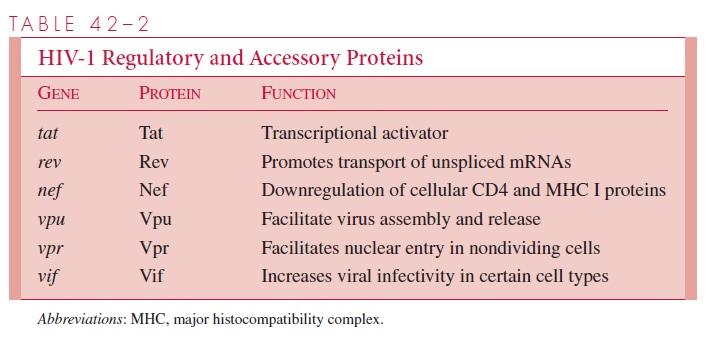Chapter: Medical Microbiology: An Introduction to Infectious Diseases: Retroviruses, Human Immunodeficiency Virus, and Acquired Immunodeficiency Syndrome
Transformation by Retroviruses
TRANSFORMATION BY RETROVIRUSES
Oncogenic retroviruses appear to transform cells to an oncogenic state by three distinct mechanisms .
First, the defective acute transforming viruses (see Fig 42 – 4) have acquired a cellu-lar gene (thereafter called an oncogene) that when expressed in the infected cell results in loss of normal growth control. On infection, the transduced oncogene is expressed from the viral LTR promoter, resulting in a rapid and acute onset of malignant disease. Persistent transformation by oncogene transduction is possible only for those retro-viruses that are not cytocidal. More than 30 different oncogenes have been identified in a variety of animal retroviruses, but no human retroviruses are known that transform by this mechanism.

The second mechanism is called insertional mutagenesis. Integration of a retro-virus in the vicinity of particular cellular genes can cause inappropriate expression of the gene, resulting in uncontrolled cell growth. These cellular genes are called protooncogenes, and insertional activation by the virus is apparently due to the closeproximity of the integrated viral promoter or enhancer to the gene. Cancers that are caused by this mechanism have very long latent periods, because integration is random and only rarely occurs near a cellular protooncogene.
The causative agent of adult T-cell leukemia, HTLV-1, exemplifies the third mecha-nism. In this case, the integrated provirus in the leukemic cells from any one patient is found at a unique location on a particular chromosome. Thus, the tumors are probably monoclonal. The cancer is not the result of insertional activation, however, because the chromosomal location of the provirus is never the same in any two patients. Instead, transformation results from the continual expression of the viral tax gene (the HTLV-1 homolog of the HIV-1 tat gene; see Table 42 – 2). Apparently, the Tax protein not only can transactivate viral transcription in the same manner as Tat , but Tax can also transactivate the expression of one or more cellular genes (possibly protooncogenes),resulting in malignant transformation.

Related Topics